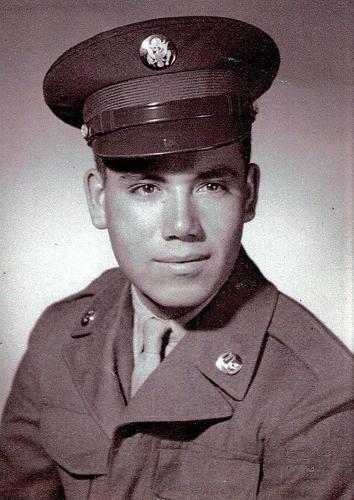Army Sgt. 1st Class Frank G. Vejar was 19 years old when he was killed in the Korean War. The Douglas soldier was accounted for nearly 70 years later.
Vejar’s remains will be returned to Douglas for burial, Department of Defense officials said Tuesday. The date has yet to be determined.
The soldier’s remains were accounted for April 14, 2020, but his family only recently received its full briefing on his identification, officials said.
His relatives could not be reached for comment.
On Nov. 30, 1950, Vejar was a member of Heavy Mortar Company, 31st Infantry Regiment, 7th Infantry Division. The teen-ager was reported missing in action when his unit was attacked by Chinese Communist forces near the Chosin Reservoir, North Korea. Following the battle, he was not recovered at the time, and he was not identified among remains returned to the U.S. immediately after the war, officials said.
In an interview last year about battles near the Chosin Reservoir during the time Vejar was fighting the Chinese Communist forces, Jeannette Gray of the Department of the Army, said, “U.S. troops were outnumbered 1-to-10 and it was minus-30 to minus-50 degrees at night, and weapons were jamming and malfunctioning because of the weather. It was pretty horrific. The soldiers did not have winter uniforms, and many were sick with pneumonia and other cold-weather injuries,” Gray said.
When soldiers made it out of the area to a Marine camp, 1,500 were air-evacuated to field hospitals, and only 385 were considered fit for duty, said Gray.
On July 27, 2018, after the summit between President Trump and North Korean leader Kim Jong Un in June 2018, North Korea turned over 55 boxes of remains of American service members killed during the Korean War, said officials.
Some of the returned remains were recovered from Sinhung-ri where Vejar’s unit had fought the Chinese forces on the eastern side of the Chosin Reservoir, records show.
The remains arrived at Joint Base Pearl Harbor-Hickam, Hawaii, on Aug. 1, 2018, and were subsequently recorded into the Defense POW/MIA Accounting Agency’s laboratory for identification.
To identify Vejar’s remains, scientists used anthropological analysis and circumstantial evidence, along with DNA analysis from relatives.
Vejar’s name is recorded on the Courts of the Missing at the National Memorial Cemetery of the Pacific in Honolulu, along with the others who are still missing from the Korean War.
A rosette will be placed next to his name to indicate he has been accounted for, said officials.





